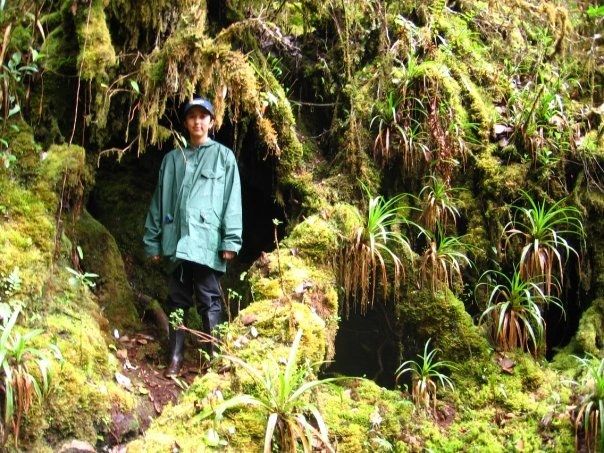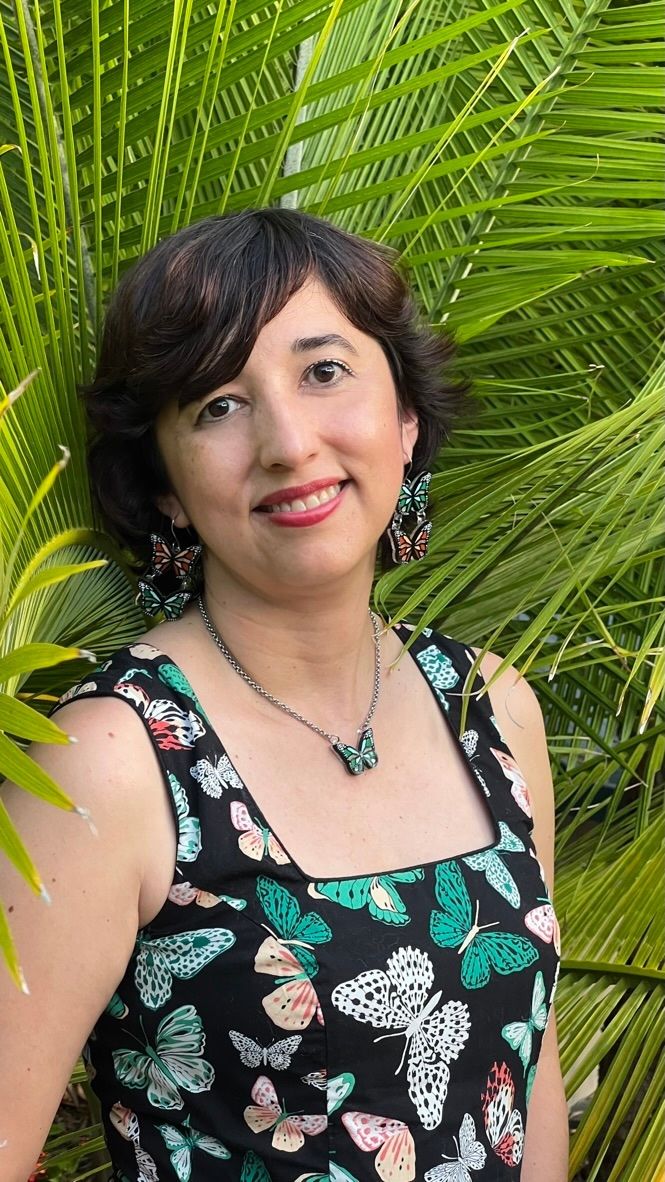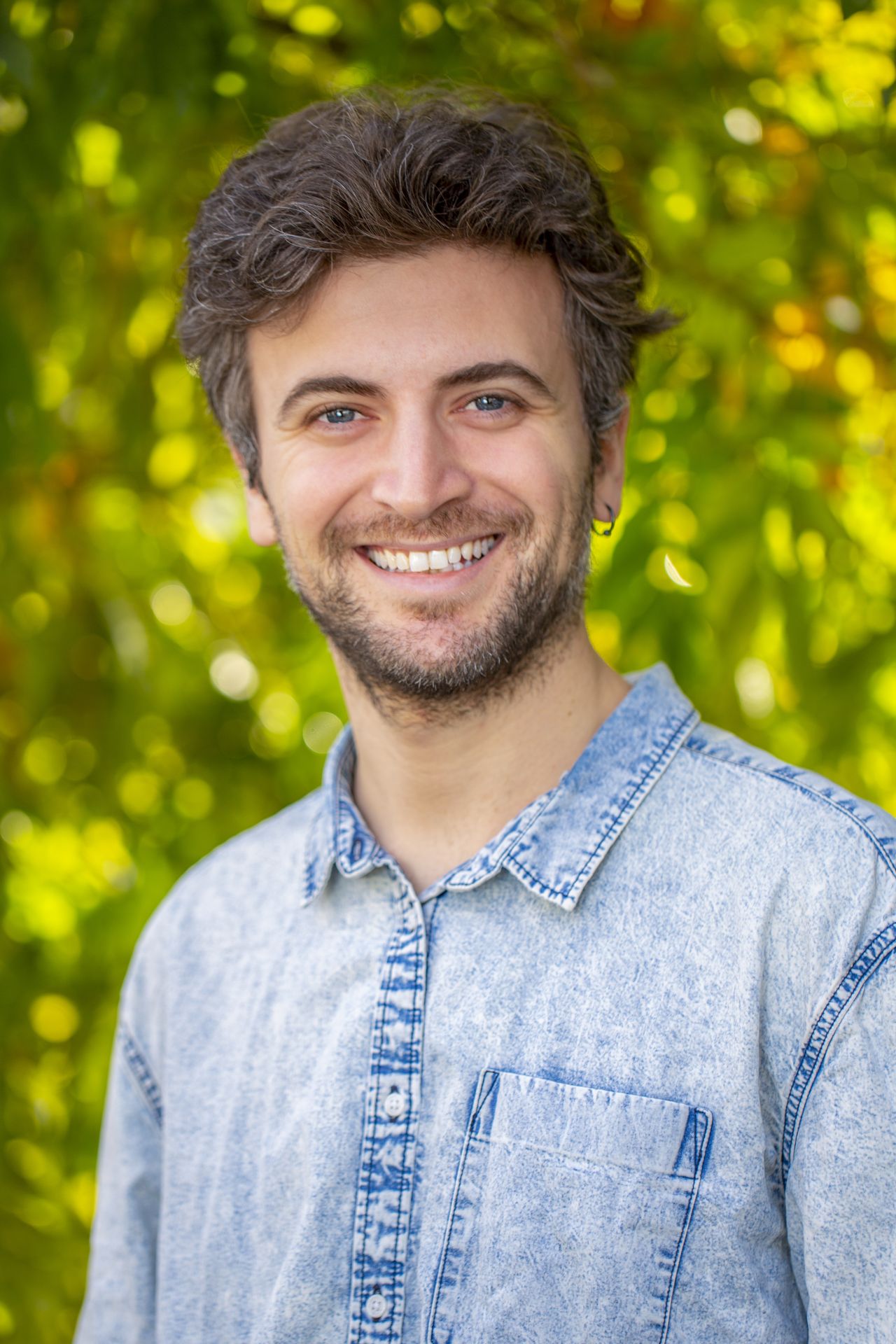Vivian Sandoval and Bugs & Beads
Vivian's deep admiration for insects shines through! With decades of expertise, she transforms her passion for entomology into stunning works of art, blending science and creativity to celebrate the beauty of bugs in everyday life.
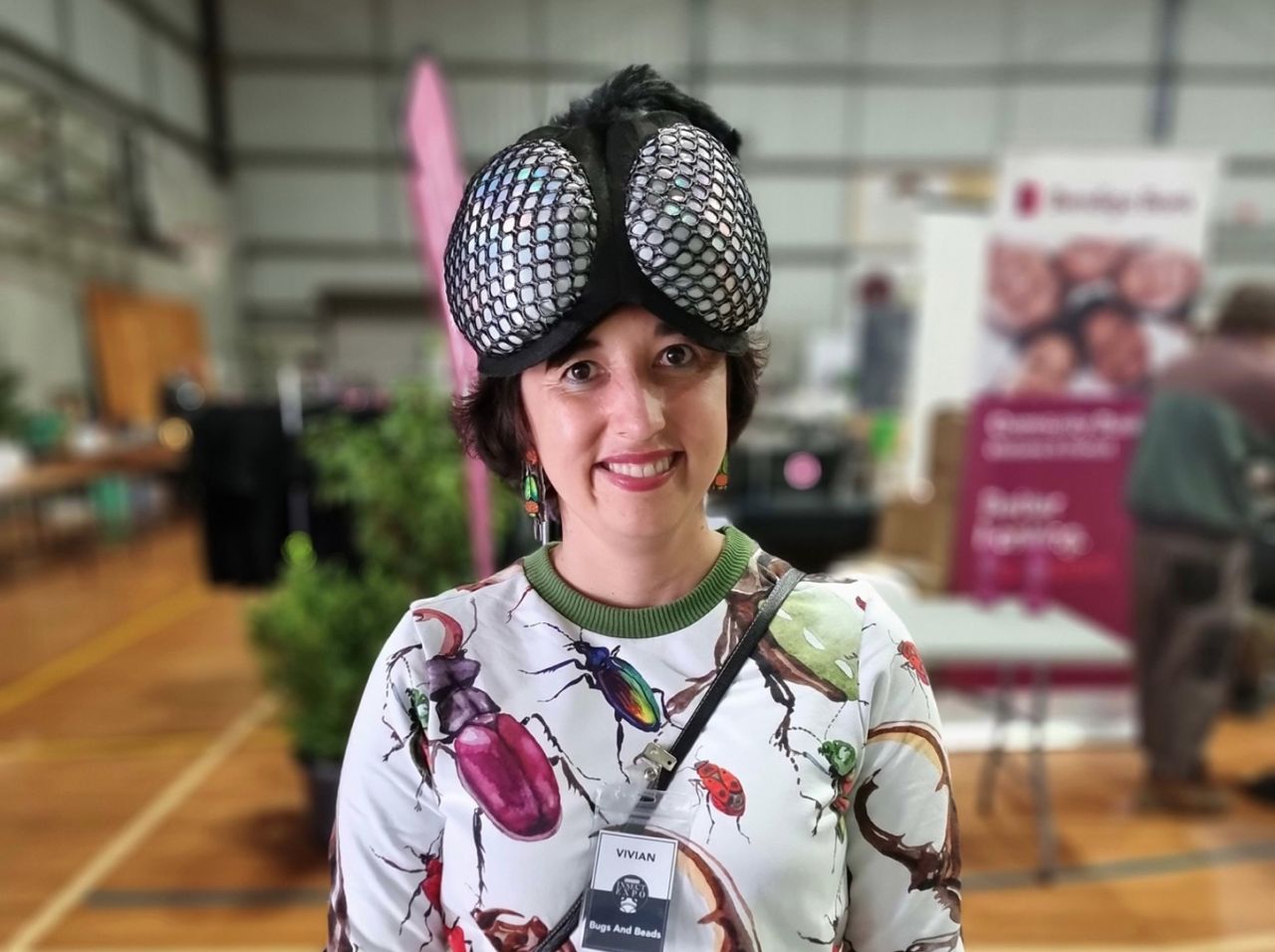
Who is Dr. Vivian Sandoval?
Vivian is an entomologist with 20 years of experience in applied entomological research on quarantine pests, invasive species, insect taxonomy (particularly of ants, mycetobiont* beetles and fruit flies), and expertise in the management of insect collections and insect rearing. Vivian has worked for the Queensland Department of Primary Industries (DPI) in Brisbane (Australia) for the last five years on market access research including post-harvest disinfestation, host status and integrated pest management of fruit flies. In other words, Vivian ensured that no fruit fly eggs and larvae remained in fruit and vegetables exported to other countries. In her new role in DPI, she is working with the National Fire Ant Eradication Program, where she is managing the Diagnostics Centre and supporting fire ant research.
Did you know?
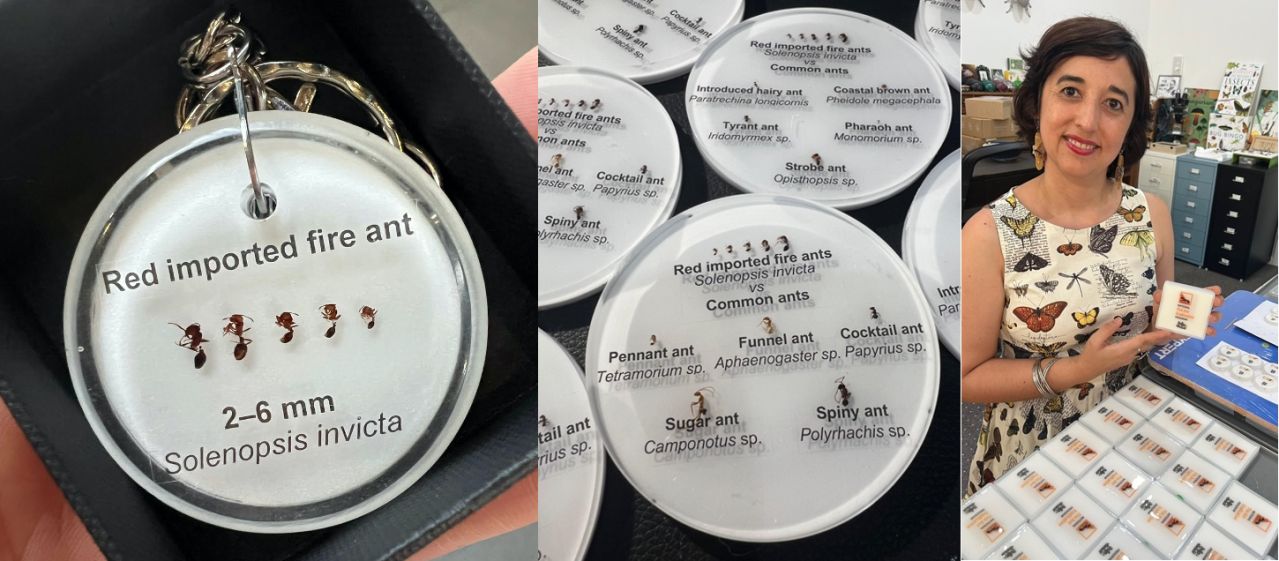
Red imported fire ants cast in resin by Vivian for the Fire Ant Program. Image: © Vivian Sandoval
Fire ants first arrived in Queensland, Australia, about 20 years ago and have since caused major social, economic, and environmental problems. These highly aggressive insects swarm quickly when their nests are disturbed, often attacking before they’re noticed. Unlike e.g. wood ants in Europe which bite with their mandibles and occasionally spray formic acid for good measure, fire ants possess a sting which they put to good use. Their stings cause a burning, itching pain that can last up to five days, with multiple stings feeling like the body is on fire.
In rare cases, fire ant stings can trigger a severe allergic reaction called anaphylaxis, which can be fatal. They are also a threat to pets and livestock, making them a serious concern for both people and animals.
In fire ant-infested areas, people need to change their habits to avoid contact. Many avoid picnicking on lawns, going barefoot, or even sitting on the ground. Routine activities like mowing or gardening can result in painful stings.
Fire ants also harm local ecosystems by competing with native insects and reducing biodiversity. Vivian works with field officers, who respond to outlier detections and collect samples for diagnosis. The diagnoses Vivian’s team perform are vital for the continuation of the Program’s eradication efforts.
How did Vivian get hooked on insects?
Vivian’s passion for biology began during a visit to Chingaza National Park in La Calera, Colombia. This unforgettable experience inspired her to study biology and, at a young age, she became a volunteer ranger. Her role involved collecting insects for a project funded by the U.S. National Science Foundation, where she learned essential techniques like setting traps and gained valuable taxonomy skills. These experiences helped her identify and distinguish different insect groups with ease, solidifying her decision to pursue entomology—a path she has never regretted!
A new hobby in a new country
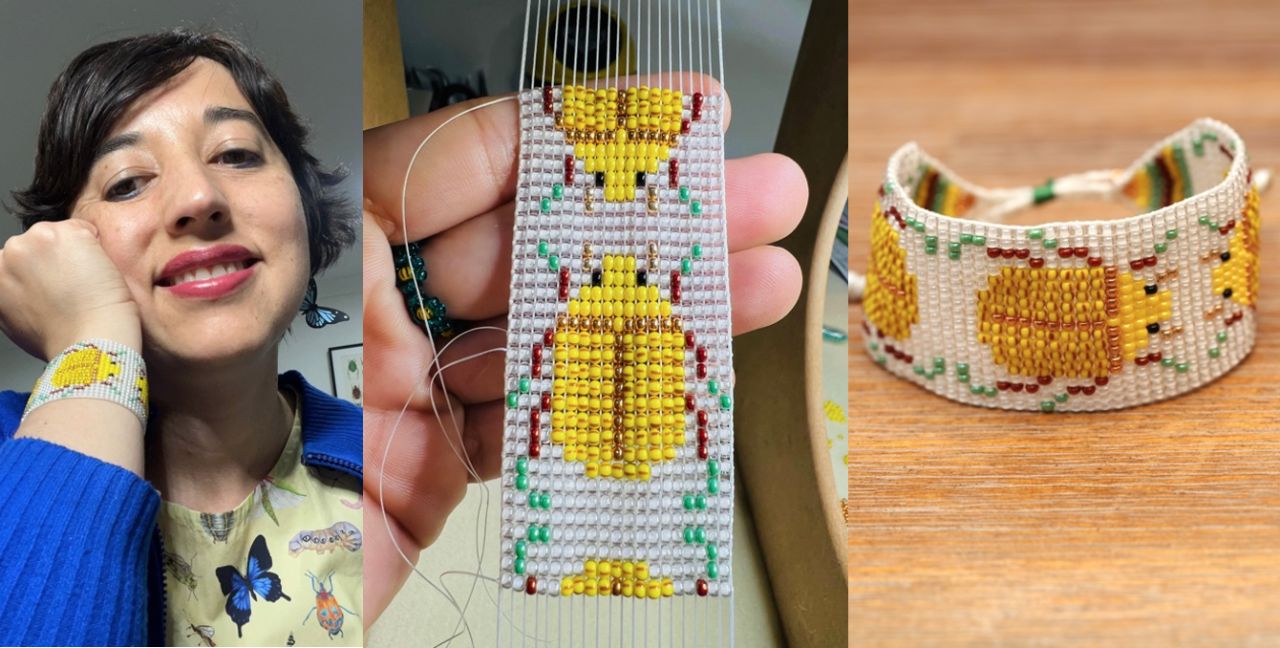
Vivian and her Christmas beetle beaded bracelet. Image: © Vivian Sandoval
Originally from Colombia, Vivian spent several years studying for her PhD in Entomology and working as a lecturer in Brazil before unexpectedly moving to Australia with her husband, who had received a job offer, and their pets (3 dogs and 4 cats). Starting a new life in a new country wasn’t easy – finding a job as an entomologist proved challenging. However, Vivian was determined and began volunteering in entomological collections and museums to get more experience and improve her skillset.
During this time, she also explored her creative side, making handmade insect-inspired accessories and jewelry and incorporating her love for insects into her personal style. Her colleagues encouraged her to take her talent further, combining her artistic skills with her entomological expertise to start a small business.
Bugs & Beads
For Vivian, the incredible diversity of shapes and colors found in insects makes them more captivating than precious stones. To foster appreciation for insects and fungi, raise awareness, and combat entomophobia (fear of insects), Vivian launched Bugs & Beads. Her unique creations include accessories, collectibles, and jewelry inspired by insects, arachnids, and fungi. She constantly adds new techniques, such as metalsmithing, enameling, casting insects in resin, and bead weaving.
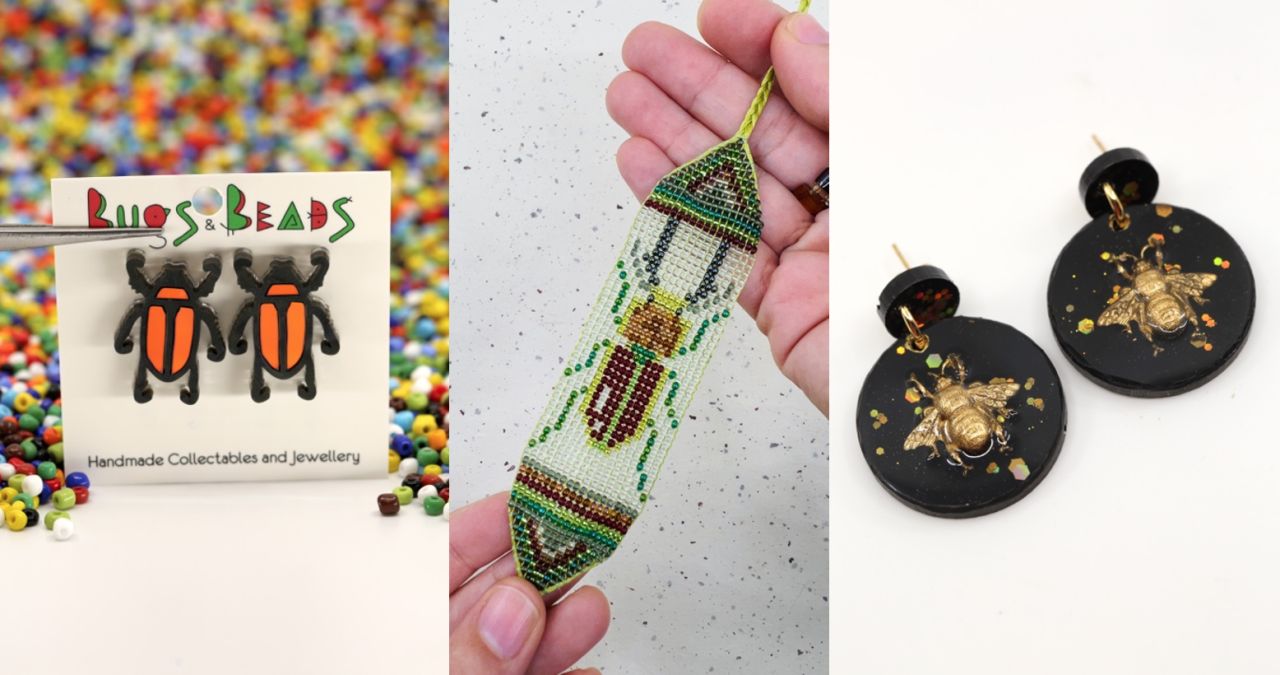
Bugs & Beads products inspired by insects. Left: Christmas beetles studs made with acrylic. Middle: Rainbow stag beetle bracelet made with glow-in-the-dark beads. Right: Brass stamp bees on black resin dangles. Image: © Vivian Sandoval
Vivian uses real specimens that have naturally died, often found in her backyard, train stations, or insect-rearing facilities. Over time, researchers began donating insect bycatch from their projects, adding to her collection.
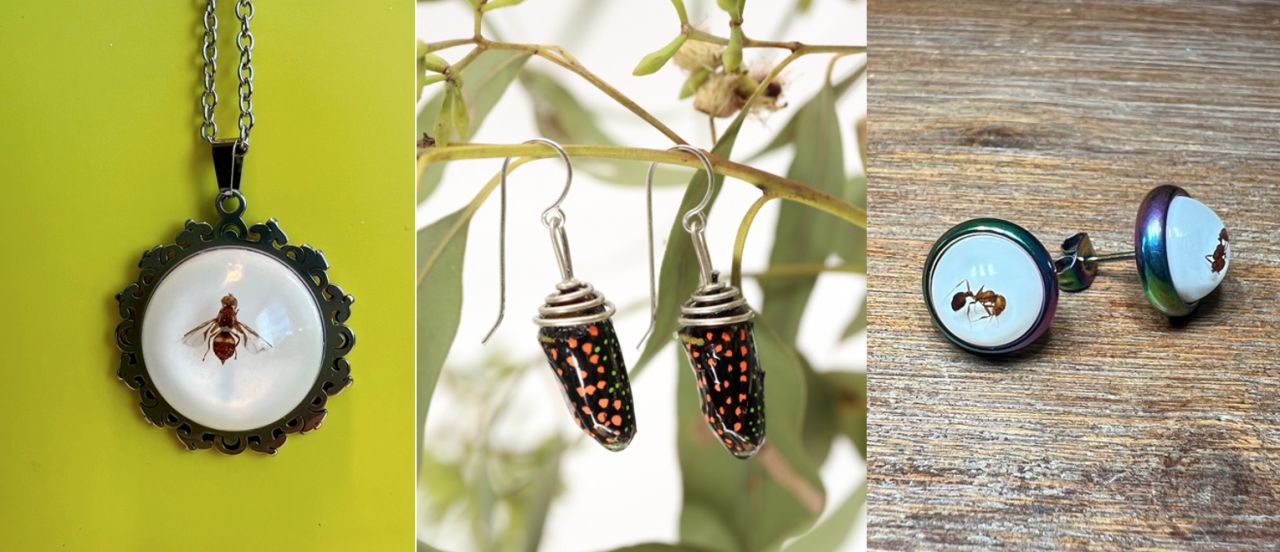
Bugs & Beads products with real insects. Left: Queensland fruit fly in resin pendant. Middle: Parasitized monarch butterfly chrysalis with resin and sterling silver. Right: Anodised stainless steel fire ant studs. Image: © Vivian Sandoval
As an entomologist, Vivian prioritizes scientific accuracy in her art. She believes that selling jewelry also comes with the responsibility to educate others. Local markets have become her favorite platform to share her knowledge, allowing her to interact directly with curious customers. She even brings along her insect pets – like leaf and stick insects and praying mantises – to give people a hands-on experience.
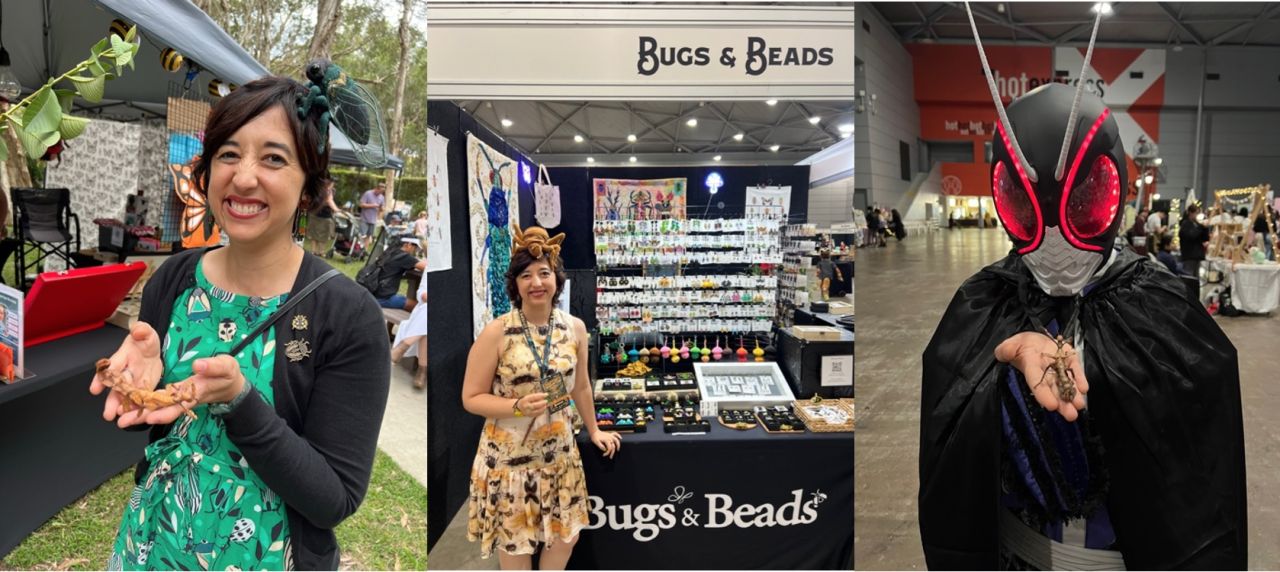
Bugs & Beads in action. Vivian enjoys setting up her market stall, wearing insect hats, showing her insect pets and chatting with customers about insects. Image: © Vivian Sandoval
Beyond jewelry, Vivian now creates educational resin blocks featuring significant Australian pests for institutions and accepts custom orders to preserve insect specimens in resin as keepsakes. Her store also features artwork from other talented artists, including insect-themed prints, cards, stationery, embroidery, and crochet sculptures.
Insects and fungi: A symbiotic relationship beyond zombies
Vivian loves fungi as much as she loves insects! Why fungi? Because her PhD focused on mycetobiont* beetles that live, eat and reproduce inside bracket fungi.
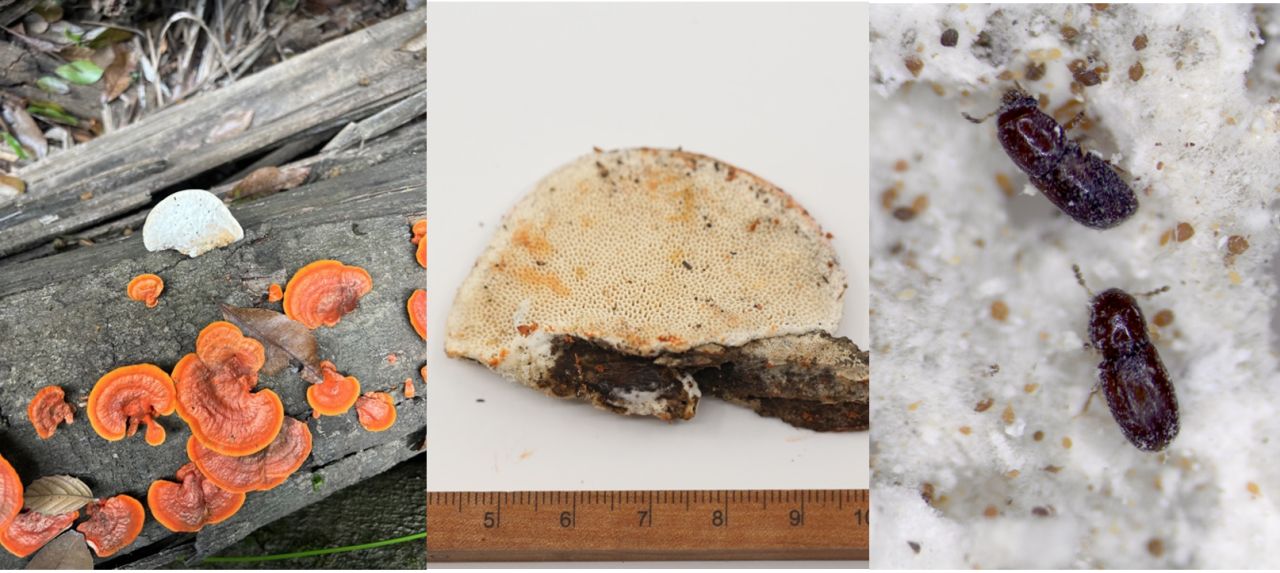
Picnoporus coccineus and its tiny inhabitants. Left: Fresh and old bracket fungi in the field. Middle: Old bracket fungi detached from stump. Right: Close-up of minute tree-fungus beetles of the species Octotemnus dilutipes, living inside this polypore. Image: © Vivian Sandoval
The obvious role of many insects is pollination, but very little is known about the interaction between insects and fungi. Many people associate this interaction with antagonism, where insects are colonised and killed by fungi, as is the case of zombie ants. But this is not always the case.
To view this content, you must accept marketing and third-party cookies.
Similar to pollen, spores of mushrooms are dispersed through the forest by attaching to certain insects (especially flies and beetles) that visit the mushroom for food. While these insects transport the spores, other insectseat them along with the mycelia and fruiting bodies (flesh), eventually returning the nutrients to the soil, thereby contributing to nutrient recycling and improving soil quality.
The minute tree-fungus beetles, known as well as ciids, are the most abundant and diverse group of insects that feed on bracket fungi. They usually colonize a fruiting body by tunneling and feeding internally after it has released its spores, sometimes long after the fungus has died. After several weeks or months, the beetles have completely consumed all the internal tissues . Without the action of ciids, these fungi could last for several years or decades without suffering any degradation, remaining an inaccessible reservoir of vital nutrients for the environment.
Glossary*
Mycetobiont: Organisms that depend entirely on fungi for shelter, egg-laying sites, or as a food source.
